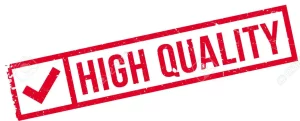- Premium Academic Help From Professionals
- +1 757 528 8682
- support@standardwriter.com
A charismatic leader and Organizational Change
A charismatic leader and Organizational Change
|
Order Number |
636738393092 |
|
Type of Project |
ESSAY |
|
Writer Level |
PHD VERIFIED |
|
Format |
APA |
|
Academic Sources |
10 |
|
Page Count |
3-12 PAGES |
Instructions/Descriptions
A charismatic leader and Organizational Change
Chapter Fifteen Organizational Change
443
Chapter Fifteen Organizational Change
A charismatic leader. A visionary leader. A demanding taskmaster (which might be good or bad leadership). People have described the leadership of Steve Jobs in many ways, and with considerably divergent attitudes toward that leadership. These diverse views illustrate that leadership is multidimensional; it exists in many ways and forms. Furthermore, people are not necessarily effective leaders from all of these perspectives. This chapter explores leadership from the five perspectives that are apparent in the huge volume of leadership literature: competency, behavioral, contingency, transformational, and implicit.2 In the final section, we also consider cross-cultural and gender issues in organizational leadership. But first, we learn about the meaning of leadership and shared leadership.
What Is Leadership?
A few years ago, 54 leadership experts from 38 countries reached a consensus that leadership is about influencing, motivating, and enabling others to contribute toward the effectiveness and success of the organizations of which they are members.3 This definition has two key components. First, leaders motivate others through persuasion and other influence tactics. They use their communication skills, rewards, and other resources to energize the collective to achieve challenging objectives. Second, leaders are enablers. They arrange the work environment—such as allocating resources and altering communication patterns— so employees can achieve organizational objectives more easily.
Leadership is one of the most researched and discussed topics in the field of organizational behavior. Google returns a whopping 724 million web pages that mention either “leader” or “leadership” (24 million of them have one of these words in the title). Google Scholar lists 173,000 journal articles and books that have one or both words in the title. Amazon, the online retailer, currently lists more than 55,000 printed leadership books. As Exhibit 12.1 illustrates, the number of leadership books and materials added to the U.S. Library of Congress catalog has grown exponentially over the past half-century. Why does the topic of leadership command so much attention? Possibly because leadership
– 7336 – 3054 1711 1240 146 130 223 358 346 446 774 5000 4000 3000 2000 1000 Number of books and other materials with “leader” or “leadership” in the title or citation cataloged by the U.S. Library of Congress and currently listed by decade that the item was published or produced. The U.S. Library of Congress is the world’s largest library.
EXHIBIT 12.1 Filling the U.S. Library of Congress with Leadership Books and Materials
1900-09 1910-191920-29 1930-39 1940-49 1950-59 1960-69 1970-79 1980-89 1990-99 2000-09
8000
350
The Palo Verde Nuclear Generating Station is the largest nuclear power plant in the United States, producing enough electricity to serve 4 million people in California, Arizona, New Mexico, and Texas. Along with extensive technical and team-related training, Palo Verde Nuclear’s 3,000 employees learn about the company’s leadership model, which emphasizes safety, operational focus, long-term productivity, and cost-effectiveness. The overarching principle of that leadership model is: “Every employee is a leader, regardless of title or position.” In other words, the company encourages shared leadership, whereby everyone is expected to serve as a leader to fulfill the company’s key objectives.4
does make a difference to an organization’s effectiveness. Furthermore, we are awed by individuals who influence and motivate others beyond expectations to build commitment to a better future.
1
Chapter Twelve Leadership in Organizational Settings
Part Three Team Processes 351
350
Part Three Team Processes
leadership
Influencing, motivating, and enabling others to contribute toward the effectiveness and success of the organizations of which they are members.
SHARED LEADERSHIP
As part of its employee engagement initiative, Rolls-Royce Engine Services in Oakland, California, involved employees directly with clients, encouraged weekly huddles for information sharing, and accepted employee requests for less micromanagement. Employees at the aircraft engine repair facility not only experienced higher levels of engagement and empowerment; they also accepted more leadership responsibilities. “I saw people around me, all front-line employees, who were leaders,” says a machine programmer at the Rolls-Royce Oakland plant. “They weren’t actually leading the company, but they were people you would listen to and follow. We didn’t have titles, but people had respect for what we did.”5
Rolls-Royce Engine Services has moved toward greater shared leadership, in which employees throughout the organization informally assume leadership responsibilities in various ways and at various times.6 Shared leadership is based on the idea that leadership is plural, not singular. It doesn’t operate out of one formally assigned position, role, or individual. Instead, employees lead each other as the occasion arises. Shared leadership typically supplements formal leadership. However, WL. Gore & Associates and Semco SA rely almost completely on shared leadership because there is no formal hierarchy or organizational chart.7 In fact, when Gore employees are asked in annual surveys “Are you a leader?” more than 50 percent of them answer “Yes.”
shared leadership
The view that leadership is broadly distributed, rather than assigned to one person, such that people within the team and organization lead each other.
The late John Gardner, the former U.S. Secretary of Health, Education, and Welfare who introduced Medicare and public broadcasting, wrote more than two decades ago that the “vitality” of large organizations depends on shared leadership.8 Employees across all levels of the organization need to seek out opportunities and solutions to problems rather than rely on formal leaders to serve these roles. Gardner observed, for example, that successful teams consist of individuals other than the formal leader
EXHIBIT 12.3
Know yourself
Be yourself
2
Chapter Twelve Leadership in Organizational Settings
Part Three Team Processes 354
Authentic Leadership
► Engage in self-reflection »Receive feedback from
trusted sources • Understand your life
story
> Develop your own style
- Apply your values
■ Maintain a positive core self-evaluation
Furthermore, leaders have practical intelligence. Cognitive intelligence is assessed by performance on clearly defined problems with sufficient information and usually one best answer. In contrast, practical intelligence is assessed by performance in real-world settings, where problems are poorly defined, information is missing, and more than one solution may be plausible.20 • Emotional intelligence. Effective leaders have a high level of emotional intelligence.21 They are able to perceive and express emotion, assimilate emotion in thought, understand and reason with emotion, and regulate emotion in themselves and others (see Chapter 4).
A charismatic leader and Organizational Change
| RUBRIC | |||
| Excellent Quality
95-100%
|
Introduction
45-41 points The context and relevance of the issue, as well as a clear description of the study aim, are presented. The history of searches is discussed. |
Literature Support
91-84 points The context and relevance of the issue, as well as a clear description of the study aim, are presented. The history of searches is discussed. |
Methodology
58-53 points With titles for each slide as well as bulleted sections to group relevant information as required, the content is well-organized. Excellent use of typeface, color, images, effects, and so on to improve readability and presenting content. The minimum length criterion of 10 slides/pages is reached. |
| Average Score
50-85% |
40-38 points
More depth/information is required for the context and importance, otherwise the study detail will be unclear. There is no search history information supplied. |
83-76 points
There is a review of important theoretical literature, however there is limited integration of research into problem-related ideas. The review is just partly focused and arranged. There is research that both supports and opposes. A summary of the material given is provided. The conclusion may or may not include a biblical integration. |
52-49 points
The content is somewhat ordered, but there is no discernible organization. The use of typeface, color, graphics, effects, and so on may sometimes distract from the presenting substance. It is possible that the length criteria will not be reached. |
| Poor Quality
0-45% |
37-1 points
The context and/or importance are lacking. There is no search history information supplied. |
75-1 points
There has been an examination of relevant theoretical literature, but still no research concerning problem-related concepts has been synthesized. The review is just somewhat focused and organized. The provided overview of content does not include any supporting or opposing research. The conclusion has no scriptural references. |
48-1 points
There is no logical or apparent organizational structure. There is no discernible logical sequence. The use of typeface, color, graphics, effects, and so on often detracts from the presenting substance. It is possible that the length criteria will not be reached. |
A charismatic leader and Organizational Change
 |
 |
 |
 |
 |
 |
Place the Order Here: https://standardwriter.com/orders/ordernow / https://standardwriter.com/



